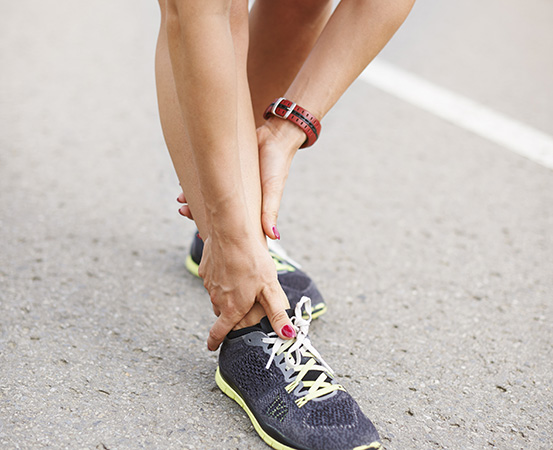
People with flat feet are discouraged from getting into long-distance running or any other strenuous physical activity or sport as it is believed they are susceptible to injuries. The armed forces in India do not recruit people with flat feet, cementing the belief further. While there is some truth to the belief, there is a lot of grey area in the narrative. Many have managed to overcome this perceived shortcoming through proper training and by adopting appropriate running techniques.
Flat feet, the definition
The arch of the foot is a tough, elastic connection of ligaments, tendons and fascia (connective tissues) between the forefoot and the hindfoot, serving as an adaptive and flexible base for the entire body. People with flat feet or pes planus have little or no arch; the entire sole touches the ground when they stand. A good percentage of the population either doesn’t have this arch or has a less pronounced arch.
To run or not to run
Eldho Paul, physiotherapist and founder of Hamsphere Physiotherapy and Rehabilitation Centre, Kerala, explains how flat feet can make one vulnerable to injuries during physical exertion.
“If there are no arches or there is a reduced arch size, the normal anatomy of the foot will be lost and this will create more tension on the structures of the sole,” says Paul. “Usually, tensile structures are brittle; running is a strenuous task which will make the feet more vulnerable.”
Paul adds that other than normal stretching and warm-up exercises, those with flat feet can use suitable footwear – use insoles and shoes with arch support – while participating in any physical activity.
“There are different types of flat feet conditions – flexible, rigid, acquired etc,” says Paul. “From my experience, flat feet are difficult to correct permanently, but they can be managed through proper orthotics and exercises. And the most common injuries that flat-footed people suffer from are plantar fasciitis, shin splints, ankle sprains and tendonitis among others.” But he says that people with flat feet can run if they take proper precautions.
Technique matters for flat feet running
Delhi-based running coach and founder of Enduroco.in, Rohan Sharma has worked with a few flat-footed athletes. According to him, the common issue athletes face is in their tendons.
“Tendonitis which is a minor injury can be corrected through proper training and running techniques,” says Sharma. “Just like people with normal feet, flat-footed people are not prone to any major injuries.”
Sharma adds that even though there are different types of shoes available for people with flat feet to run in, they can use normal shoes as well. In such a case, the running speed might be compromised initially. But he points out that the arch starts improving as one starts running.
Short strides and happy landing
In April 2016, Greater Noida resident Anupam Gupta woke up with a sharp pain in his heels. He initially ignored it, but when the pain increased over time, Gupta consulted a sports doctor who told him that it was due to him being flat-footed and advised him to not stand barefooted for long durations. He was asked not to run at all.
“I was overweight, around 85 kilograms. No one advised me to lose weight and instead the pain was attributed to me being flat-footed,” says Gupta. “Upon advice from a friend, I started running. I mainly focused on my running technique to avoid injuries.”
Gupta, now a regular marathon runner, started with shoes with arch support. He ran in them for around 1,000 kilometres but later shifted to normal footwear.
“There is no thumb rule which can be applied to every person. In my case what works is rotating footwear regularly. One day I run in sandals followed by running in thin-sole shoes. Then I use normal running shoes,” says Gupta. He also points out the importance of taking short strides and avoiding landing on the balls of the feet which could cause injuries.
“Doing regular strength and core exercises also play an important role and it is normally avoided by most people,” he adds.
Takeaways
- Through training and adopting suitable running techniques and posture, people with flat feet can undertake any form of strenuous physical activity, including marathons and ultra-running.
- A flat-footed person can also use regular running shoes instead of specialised ones with arch support or insoles.
- A person with flat feet is not prone to any major injuries. Minor injuries can be mitigated or avoided through stretching, following muscle conditioning routines and adopting the right running techniques.

















